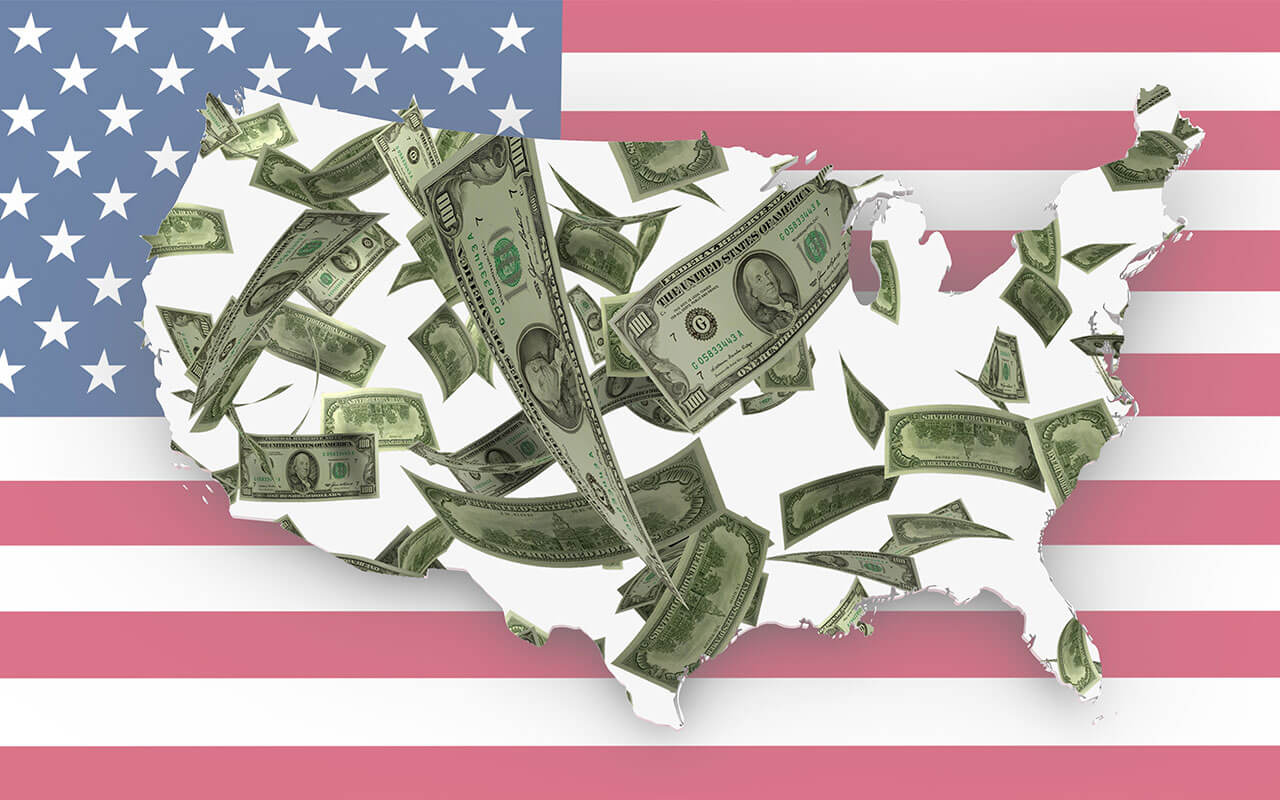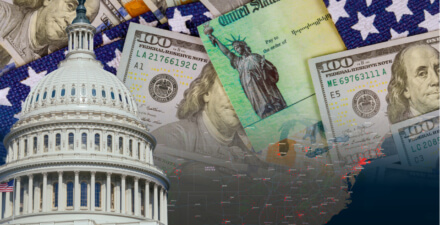For an equitable recovery, federal relief to deal with the coronavirus recession must be transparent to the U.S. public

U.S. policymakers’ decisions are only as good as the data they have to inform them, and the public’s trust in institutions is only as good as the information available to them.
That fact came into stark relief during the previous economic crisis. During the subprime mortgage collapse beginning in 2007 and its subsequent policy response, no federal agency collected or served as a clearinghouse for comprehensive data on mortgage delinquencies and foreclosures. That meant that when Congress and executive branch agencies made decisions about allocating rescue funding, they had to do so using imperfect proxies and proprietary data, which included many gaps, were reported by companies with potential conflicts of interest, and missed key information needed to ensure an equitable recovery.
As a result, “legislators, regulators, and market participants [were] flying blind,” to quote a Congressional Oversight Panel report released at the time. It took until 2012 for the federal mortgage foreclosure data collection effort to begin, years after the peak of the crisis and well after public trust in government and civic engagement had already been eroded.
U.S. policymakers face similar data challenges today as they grapple with the coronavirus pandemic and the economic recession it has caused. The Washington Center for Equitable Growth recently highlighted how academics and journalists have had to piece together a patchwork of information on the spread of the coronavirus and COVID-19 infections, as well as hospitalization and death rates by race and ethnicity. While the information available suggests that people of color, particularly black Americans, are suffering the most from the coronavirus, it may take years until policymakers and scholars fully understand how the devastation wrought by this pandemic was distributed across different groups in our society.
The coronavirus and the COVID-19 disease it delivers have also wrought dire economic devastation that required massive, if still insufficient, fiscal intervention to blunt the effects of the sharp downturn. The Washington Center for Equitable Growth, before the pandemic and particularly in the months since, has highlighted the need for more data to ensure a stable and broad-based recovery through a project we call GDP 2.0. This data collection proposal would have the U.S. Bureau of Economic Analysis break out U.S. income changes by decile of the population so that policymakers can see how income changes for the working class, the middle class, and the top 1 percent of income earners over time.
These data could well serve as an accountability measure, keeping tabs on who does and does not benefit from the eventual economic recovery following the pandemic-induced economic shutdown.
Similarly, if policymakers are to fully understand the economic harm caused by the coronavirus recession and how aid deployed by policymakers reaches vulnerable populations, then one area where more data reporting and transparency is needed is across small and large business rescue programs authorized under the Coronavirus Aid, Recovery, and Economic Security, or CARES, Act, and via other Federal Reserve policy interventions.
Small business rescue aid
As it relates to small business rescue aid, the public needs additional data to fully understand who the program is serving. Previous Washington Center for Equitable Growth research stresses this need, with interim reports on the distribution of funding across geographic and racial groups underscoring this imperative.
Specifically, the U.S. Small Business Administration should release granular data on loan numbers and amounts disbursed to businesses, disaggregated by lending institution, employee size, city and county, and customer status (existing bank customers precoronavirus recession or customers new to the lender). Data along these lines are available in U.S. Securities and Exchange Commission filings for public companies that received (and now must return) Paycheck Protection Program funding by May 14, but this same information is unavailable for privately owned businesses—the vast majority of participants in the program. The Small Business Administration has been responsive in providing these data at the request of researchers, but more could be done to make this information universally available and enable widespread public scrutiny while protecting personally identifiable information of borrowers.
Data by race, ethnicity, and gender among borrowers also are important for policymakers, journalists, advocates, and U.S communities more broadly to be able to access. Because this information was not required at the point of application, however, it’s much more difficult for lenders or the Small Business Administration to collect it after the fact. One remedy may be to release the names of all the recipients of Paycheck Protection Program funding to enable the public, researchers, and journalists to scrutinize whether small businesses owned by entrepreneurs of color or women had proportionate access to rescue aid.
Unfortunately, because data collection was not required on the front end, policymakers and the public may never know the number of applications submitted but not funded by lenders or the number of potential borrowers who were deterred by long wait times or other barriers to access. These application data are crucial to fully understand patterns of discrimination and underscores the need for the Consumer Financial Protection Bureau to finalize the small business lending data collection rule mandated by the Dodd-Frank Act of 2010 but subject to further delays because of the coronavirus pandemic.
Troublingly, the Small Business Administration seems to be going in the wrong direction in terms of data transparency, with the latest SBA report on Paycheck Protection Program funding, unlike the first round of funding, not including North American Industry Classification Systems codes or information that highlights which sectors of business are being helped. This information is essential as policymakers seek to understand the state of different parts of our economy. Previous analysis by the Washington Center for Equitable Growth highlighted that small businesses in the hard-hit food and service sectors were being underserved by the program, while firms in the construction sector received relief disproportionate to comparatively more modest job losses.
If Congress passes further legislation related to the CARES Act, it should require this information to be reported and should begin down the path of close oversight of program implementation. Finally, Congress should provide that the Congressional Oversight Commission authorized by the CARES Act be provided with subpoena authority and jurisdiction to examine the lending authorized by the Small Business Administration under the Paycheck Protection Program, as well as the Federal Reserve’s purchase of PPP loans.
Large business rescue aid
Publicly available data on aid provided to large U.S. businesses during the coronavirus recession also are essential. As the global financial crisis a decade ago taught us, the lack of timely disclosure of rescue aid can foment distrust among the public that ultimately undermines confidence in our institutions. After an initial reluctance to disclose rescue recipients during the past financial crisis, the Fed changed course (after litigation and criticism) and committed to a regime of increased public transparency.
Indeed, the Federal Reserve took an important first step in making good on that commitment last month, announcing that it would disclose, on a monthly basis, the names of borrowers under various rescue programs, the amount borrowed and at what rate of interest, and the overall costs, revenues, and fees from various facilities. The Fed could improve upon these disclosures, however, by providing transaction documents after loans, guarantees, and purchases are made and also by expanding disclosures to include programs not directly authorized under the CARES Act. This would include the Fed’s $100 billion commitment to purchase asset-backed securities, including those backed by consumer credit products such as student loans, auto loans, and credit card receivables.
Given the unprecedented nature of the Fed purchasing certain riskier assets, including collateralized loan obligations (highly leveraged corporate loans), this disclosure is warranted. Bharat Ramamurti, a member of the Congressional Oversight Commission, recently suggested a suite of improved disclosures that the Fed should provide.
Finally, the Fed should ensure that each company that receives aid under the emergency programs discloses their beneficial owners in order to prevent firms from creating shell structures to evade accountability. One proposal from Andy Green of the Center for American Progress would be to require each company receiving aid to be treated as a public company, register with the Securities and Exchange Commission, and be subject to the associated disclosure and antifraud enforcement regimes.
The Fed also should consider making public the meeting schedules of all members of the Board of Governors and certain senior staff such as the general counsel—a helpful step currently taken by the chair of the Board. The public should be able to see the mix of firms and advocates getting the attention of the Fed at this pivotal time, particularly when the pandemic means that direct access to key policymakers may be more limited.
Other transparency measures also are warranted. Due to the desire for the Fed to be able to react quickly to rapidly changing market conditions, the CARES Act waived Sunshine Act requirements for the agency. Typically, the Fed must provide public notice of meetings wherein its members make important decisions and allow public access to the proceedings. The CARES Act includes important requirements for the Fed chair to provide written notice for instances waiving the Sunshine Act, but the Fed itself should go further and commit to post the rationale for those waivers on its website in a timely fashion.
It’s clear that the public is hungry for an opportunity to weigh in on the Fed’s rescue efforts. The Fed announced last week that it received 2,200 comments on potential changes to its Main Street Lending Facility, a program designed to help medium- to large-sized businesses by partially guaranteeing loans from private lenders. Those comments were received via a comment box on the Fed’s website with a deadline of April 16, 2020, rather than the traditional receipt process via the Federal Register, which is subject to the Administrative Procedures Act. The Fed should make all of those 2,200 comments public so that the public, policymakers, journalists, and advocates can understand what outside stakeholder recommendations supported program changes adopted by the Fed.
Further, if the Fed makes additional changes to term sheets outlining the rules around various facilities, then it should clearly note the changes being made and keep all iterations of documents on its website to allow for easy cross-comparison. The Fed also should consolidate all guidance on CARES Act and related facilities in one place on the Board’s website. Some rescue programs are being implemented by regional banks of the Federal Reserve system, and currently, finding all program information requires going to different reserve bank websites.
Other provisions in the CARES Act require disclosure of any compensation paid to “financial agents,” or firms that administer rescue funding on behalf of the government. Yet that provision applies to the Treasury secretary and could be interpreted not to cover the Fed. All contract terms with financial agents, whether initiated by the Treasury Department or the Fed, should also be disclosed and posted on the web.
Finally, the 12 regional banks that comprise the Federal Reserve system also should be made subject to the Freedom of Information Act, with appropriate exemptions to protect the confidentiality of supervisory information and deliberative material. Given that Congress delegated to the Federal Reserve System an unprecedented hybrid mix of fiscal policy responsibilities and lender-of-last-resort responsibilities under the CARES Act, it makes sense that the regional reserve banks, deputized to carry out these functions by the Board of Governors in Washington, D.C., be subject to public transparency laws.
Conclusion
If our nation is to recover from the coronavirus recession, we need to channel resources quickly and effectively into urgent rescue programs. But the long-term success of these programs also hinges on policymakers being deliberate in disclosing to the public how they’re allocating taxpayer money. The goals of speedy action, data collection, and transparency are not in tension. More importantly, the long-term stability of our democracy requires the public to have trust in institutions—trust that is only available when the public, Congress, journalists, and advocates have full access to the information.






